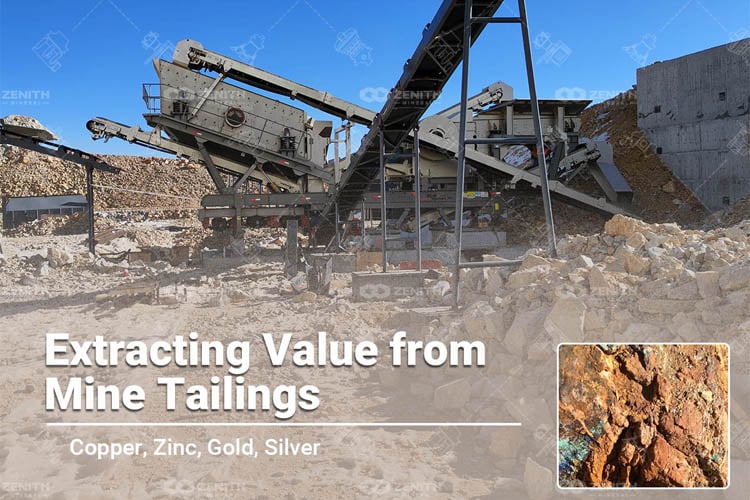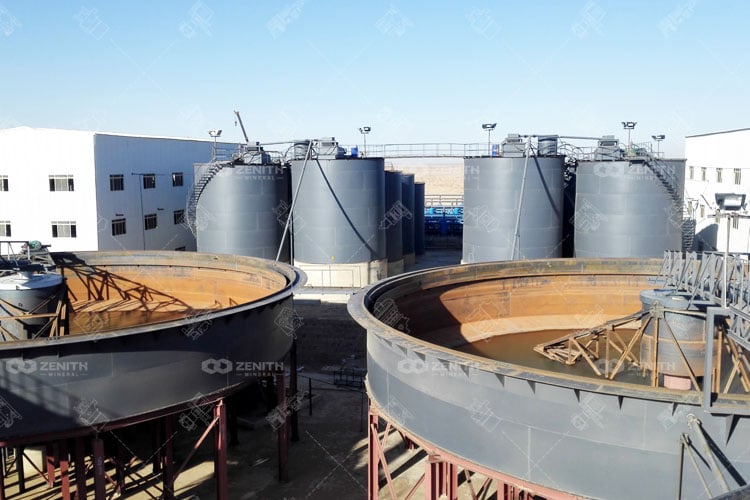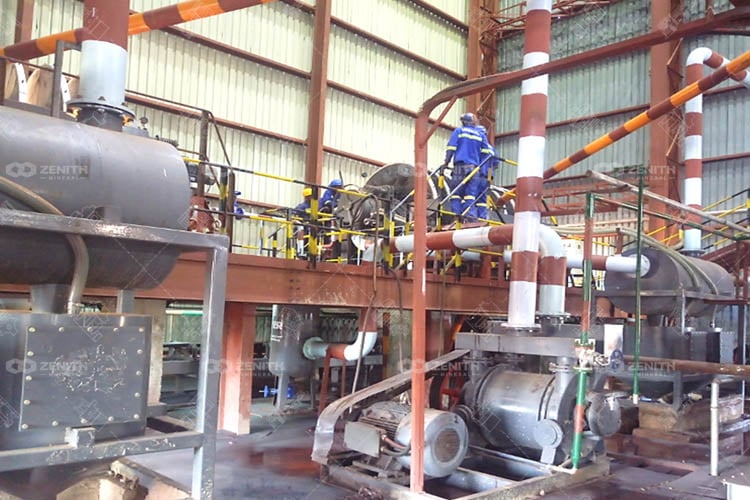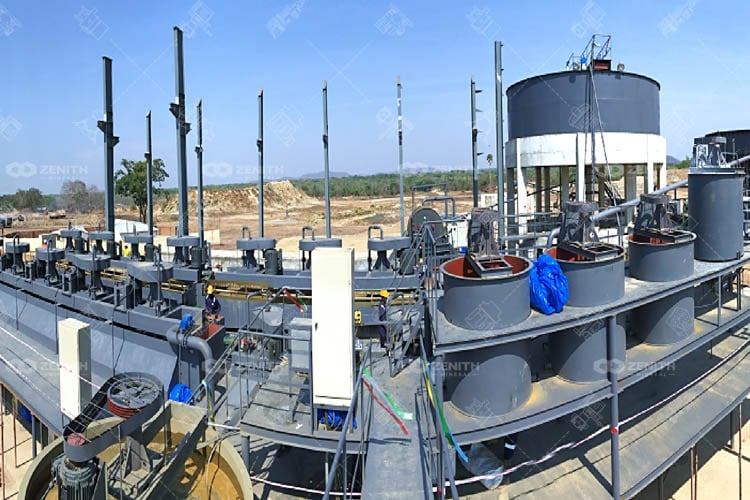The extraction and processing of metal-bearing ores is a critical component of the global economy, providing the raw materials essential for countless industrial, infrastructure, and consumer applications. However, this resource extraction comes at a price - the generation of vast quantities of mineral waste known as tailings. Historically viewed as an environmental liability, these tailings contain residual concentrations of valuable metals that have evaded conventional extraction processes.
As the mining industry confronts the challenges of declining ore grades, tightening environmental regulations, and volatile commodity prices, the need to unlock the untapped value within tailings has become increasingly pressing. This comprehensive article explores the innovative techniques and emerging technologies enabling the effective reclamation and beneficiation of metal-laden mine tailings.

Mineral processing activities generate staggering volumes of tailings - the finely ground, nutrient-depleted, and chemically-altered waste materials that remain after target minerals have been extracted. Globally, it is estimated that the mining industry produces over 30 billion metric tons of tailings annually, with this figure projected to rise as ore grades continue to decline.
Historically, tailings have been regarded as a costly environmental liability, requiring energy-intensive and capital-intensive storage, treatment, and disposal measures. The potential for catastrophic tailings dam failures, toxic metal leaching, and the disruption of sensitive ecosystems have heightened public scrutiny and regulatory oversight of these waste streams. Additionally, the land area consumed by ever-expanding tailings facilities represents a significant opportunity cost, precluding alternative uses such as agriculture or urban development.
However, this dominant paradigm is shifting as the mining industry recognizes the latent economic and environmental value inherent within tailings. Detailed mineralogical and chemical analyses have revealed that many tailings contain residual concentrations of valuable metal species - including base metals, precious metals, and critical minerals - that were not fully recovered during the initial extraction and processing stages.
Unlocking this trapped value through innovative tailings valorization techniques can offer a range of benefits:
As producers grapple with tightening profit margins, heightened environmental scrutiny, and evolving market demands, the imperative to extract maximum value from mineral resources - including those previously discarded as tailings - has never been more pronounced. The development and deployment of innovative tailings beneficiation technologies represent a crucial pathway forward for the mining industry.
The effective reclamation and valorization of mine tailings begin with a comprehensive understanding of their unique physical, chemical, and mineralogical properties. These waste streams exhibit substantial heterogeneity, varying considerably in composition based on factors such as the host ore deposit, extraction and processing techniques, and operational history of the mine.
Detailed characterization studies, often involving a combination of advanced analytical techniques, are essential for unlocking the valorization potential of a given tailings deposit. Key parameters to assess include:
Tailings typically contain a complex assemblage of mineral phases, including residual valuable metals (e.g., copper, zinc, gold, silver) as well as gangue materials (e.g., silicates, carbonates, sulfides). Quantifying the specific mineral species and their relative abundances is crucial for determining the most suitable beneficiation approach.
The fineness of the tailings particles - a byproduct of extensive milling and grinding during ore processing - can significantly impact the efficacy of downstream separation technologies. Coarser particles may be amenable to gravity or magnetic separation, while finer fractions may require more advanced techniques like froth flotation or hydrometallurgical extraction.
Tailings often contain elevated concentrations of heavy metals, metalloids, and other deleterious elements that can pose environmental and health risks. Comprehensive chemical analysis, including the identification of any contaminants, informs the selection of appropriate treatment and disposal strategies.
Parameters such as density, surface charge, and magnetic susceptibility influence the tailings' response to various physical separation processes. Evaluating these properties helps optimize the performance of techniques like dense media separation, electrostatic separation, and magnetic separation.
Mineralogical and chemical characterization can be accomplished through a combination of techniques, including X-ray diffraction (XRD), scanning electron microscopy (SEM), energy-dispersive X-ray spectroscopy (EDS), and inductively coupled plasma mass spectrometry (ICP-MS). Physical property measurements may involve particle size analysis, zeta potential determination, and magnetic susceptibility testing, among others.
By developing a detailed understanding of the tailings' unique composition and behavior, producers can design and implement tailored beneficiation strategies that maximize metal recovery while minimizing environmental impacts. This foundational knowledge serves as the cornerstone for advancing effective tailings valorization initiatives.
One of the primary approaches to extracting residual valuable metals from mine tailings is through hydrometallurgical processing - a suite of aqueous-based techniques that leverage chemical reactions to selectively dissolve, recover, and refine target metal species.
Hydrometallurgical flowsheets for tailings valorization typically comprise the following key stages:
The specific hydrometallurgical flowsheet employed is heavily dependent on the unique mineralogical and chemical composition of the tailings, as well as the target metal species and desired product specifications. Factors such as reagent selection, operating conditions (pH, temperature, residence time), and process integration must be carefully optimized to achieve high metal recoveries and purities.
Advances in hydrometallurgical technologies, including improved leaching agents, novel separation techniques, and process automation, have significantly enhanced the economic and environmental viability of this approach. Additionally, the integration of hydrometallurgy with complementary physical separation methods can further improve overall tailings valorization efficiency.
Some key benefits of hydrometallurgical tailings processing include:
As the mining industry continues to seek ways to extract maximum value from its resources, hydrometallurgical tailings beneficiation represents a crucial pathway for transforming waste liabilities into profitable opportunities.
In parallel with hydrometallurgical processing, the mining industry has also made significant strides in developing advanced physical separation technologies capable of extracting valuable minerals from tailings. These techniques leverage differences in the physical properties of the various mineral components to enable selective concentration and recovery.
DMS utilizes the principle of differential density to separate particles based on their specific gravity. Tailings are introduced into a dense medium, typically a suspension of fine ferrosilicon or magnetite particles in water, which allows lower-density gangue minerals to float while higher-density valuable minerals sink. This method is particularly effective for the recovery of coarse-grained metal sulfides.
Gravity-based separation processes, such as shaking tables, spiral concentrators, and Falcon centrifugal concentrators, exploit differences in particle settling velocities to separate minerals. These techniques are well-suited for the beneficiation of tailings containing dense metal-bearing minerals, like gold, silver, and tin.
Magnetic separation technology capitalizes on the magnetic susceptibility of certain minerals to selectively remove them from the tailings matrix. Induced and permanent magnetic separators are commonly used to extract iron-rich or paramagnetic minerals, like magnetite, hematite, and ilmenite, for further processing.
This technique segregates minerals based on their surface electrical charge characteristics. Tailings are first triboelectrically charged, then passed through an electrostatic field, which causes the differently charged particles to be deflected towards oppositely charged collection electrodes. Electrostatic separation is particularly effective for upgrading valuable mineral sands and rare earth element-bearing tailings.
The combination of these physical separation methods, often in staged circuits, can achieve remarkable results in terms of metal recovery and waste volume reduction. Careful characterization of the tailings' mineralogical and physical properties is essential to select the optimal sequence and configuration of separation technologies.
Key advantages of physical separation-based tailings valorization include:
As the mining industry continues to grapple with the environmental and economic challenges posed by tailings, the strategic deployment of state-of-the-art physical separation technologies represents a crucial component of holistic tailings management and beneficiation strategies.
Effectively incorporating tailings valorization initiatives into the broader mineral processing workflow is essential for maximizing the economic and environmental benefits of these initiatives. This requires a systemic approach that aligns tailings management with the overarching goals of the mining operation.
Ideally, tailings valorization should be considered as an integral part of the mineral processing circuit, with the design and optimization of the overall flowsheet jointly accounting for the recovery of valuable products from both the primary ore and the tailings streams. This can be achieved through strategies such as:
By adopting a holistic, systems-level approach to tailings valorization, mining companies can unlock substantial operational, financial, and environmental benefits. This includes enhanced resource efficiency, reduced waste volumes, diversified revenue streams, and a strengthened social license to operate.
Moreover, the integration of tailings beneficiation into the broader mineral processing workflow aligns with the global shift towards a more circular economy, where waste streams are reintegrated as valuable inputs rather than discarded. This transformation represents a crucial step in the mining industry's journey towards greater sustainability and responsible resource stewardship.
As the mining industry continues to confront the challenges of declining ore grades, tightening environmental regulations, and volatile commodity prices, the imperative to extract maximum value from all available resources has never been more pressing. The valorization of metal-laden mine tailings, once regarded as a waste liability, has emerged as a critical pathway for enhancing the economic and environmental performance of mineral processing operations.
Several key trends and innovations are poised to shape the future of tailings beneficiation:
As these trends converge, the mining industry will continue to transform the perception of tailings from a waste liability to a valuable resource. By unlocking the inherent worth of these mineral-rich waste streams, producers can enhance their financial performance, strengthen their environmental stewardship, and position themselves for long-term success in an evolving global marketplace.
The valorization of metal-laden mine tailings represents a pivotal opportunity for the mining industry to enhance its operational and environmental sustainability. By deploying innovative hydrometallurgical processes, advanced physical separation technologies, and holistic systems-level integration, producers can extract maximum value from their mineral resources, diversify revenue streams, and mitigate the environmental footprint of their activities.
As the global demand for base metals, precious metals, and critical minerals continues to rise, the imperative to extract every last ounce of value from ore deposits - including the previously discarded tailings - has never been more pronounced. By embracing these tailings beneficiation strategies, the mining industry can transform waste liabilities into revenue-generating assets, positioning itself for long-term competitiveness and growth.
The journey towards sustainable, circular mineral processing will be defined by the mining sector's ability to unlock the latent value within its tailings streams. Through collaborative research, technological innovation, and strategic implementation, producers can realize the full potential of these mineral-rich waste materials, reinforcing their role as essential providers of the raw materials that power the global economy and society.

CIL processing plants play a critical role in modern gold mining operations. The CIL (Carbon in Leach) is a hydrometallurgical technique used to extract gold from ore.

This article provides a comprehensive overview of a hematite ore processing plant in Zambia, focusing on its capacity, processing techniques, equipment used, and the benefits of the operation.

Extraction methods for oxidized gold ore can be broadly categorized into four main processes:Non-Cyanide Extraction Methods, Cyanidation Extraction Method, Oxidized Gold Ore Sulfide Extraction Method, Oxidizing and Roasting Extraction Method.
Fill your requirements here, and we'll send the custmized solution and quotation to you by the reserved contact information.